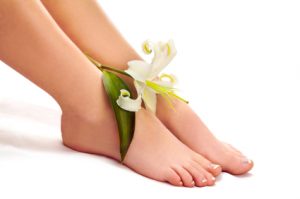Cracked heels are also called heel fissures, simply meaning a split in the skin around the heel. The skin can crack for a few different reasons. Skin fissures can also affect other parts of the foot, not just the heels, such as the skin around the toes. Some conditions can also make the skin more likely to crack, such as athlete’s foot.
What cause cracked heels?
Commonly, cracked skin on our heels and feet is caused by excessively dry skin. For many it’s worse in the winter months or for those who live and work frequently in dry environments. But going barefoot and wearing shoes with open backs can exacerbate the problem, meaning that even in the summer our feet are in rough shape.
Unfortunately, as the condition worsens, it becomes more difficult to treat, since regular moisturizers won’t penetrate the dry, dead, thick skin on our heels. These cracks can become sore and may even bleed.
Factors that can also be involved in the cause of cracked heel skin include:
* Being overweight
* Some medical conditions predispose to a drying skin (eg diabetes)
* Skin conditions (eg psoriasis)
* Open back on the shoes
* Prolonged standing
Treatment and prevent cracked heels
• Try petroleum jelly. It may take a while to soak in, but petroleum jelly is a good way to restore moisture to cracked heels. Try coating your feet in petroleum jelly at night before bed, slip on some comfy socks, and let it soak in overnight while you are asleep.
• Invest in a good foot cream. Look for rich, heavy moisturizing creams or even oils to rub into your dry feet. If it feels greasy, it’s good for those dry, cracked heels. You should do this as soon as you get out of the tub for the best absorption.
• Drink plenty of water. Drink lots of water to help rehydrate your skin as you heal those cracked heels.
• Ease off the soaps. It’s important to keep cracked heels clean and dry, but a harsh soap can keep drying out those feet. Use a gentle, mild cleanser that won’t strip more moisture out of your feet.
• Moisturize after each shower. Every time you step out of the bath or shower, the next step should be to rub moisturizer into your feet. This helps to seal moisture in.
• Skip a shower. If you can, try not to bathe every day – and certainly not more than once a day. Water inside the body hydrates, but water outside the body washes away oils and sucks the moisture out. When you do bathe, keep it short. The more time you spend in the tub, the more moisture you’re losing in your feet.
• Try an oatmeal bath. Skip harsh soaps in favor of something a little less drying. Bathing with a moisturizing, skin-soothing cleanser that is oatmeal-based will help protect feet from cracked heels.
• Keep water lukewarm. Instead of a toasty-hot bath or shower, keep the water a little cooler. Very hot water will dry out your skin – on your feet and everywhere else.
• Don’t scrub your feet. Vigorously rubbing your feet with a washcloth to get them clean or a towel to dry them after you bathe will only dry them out more. Gently pat your skin clean and dry instead.
Cracked heels are definitely a pain, but with some extra effort and some pampering, you can get them cleared up in no time.

